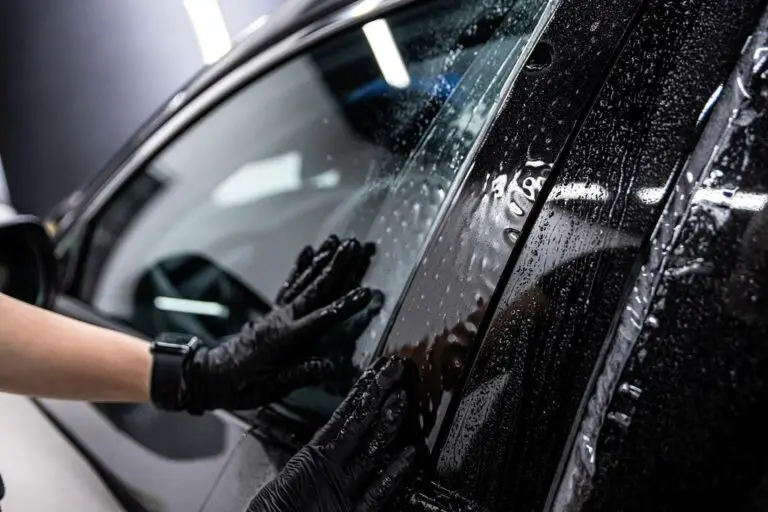
Boost your surface’s lifespan with our Ultimate Guide for Surface Protection🛡️ Dive in and learn about premium protective coating solutions!✨
Protective coatings are essential for safeguarding surfaces from corrosion, wear, and environmental damage. They enhance durability, prolong the lifespan, and maintain aesthetic appeal while reducing maintenance costs across various industries including construction and manufacturing.
Understanding Protective Coating
A protective coating refers to a specialized layer applied to surfaces to shield them from environmental damage, corrosion, and wear. This coating enhances durability and longevity while providing aesthetic appeal, ensuring optimal performance over time.
Various surfaces can benefit from protective coatings, including metal, wood, concrete, and fibreglass. These coatings enhance durability, and resistance to environmental elements, and improve aesthetics while preventing corrosion, wear, and moisture damage.
Types of Protective Coatings
Protective coatings play a vital role in preserving the integrity and longevity of materials across a wide spectrum of industries. From marine vessels enduring harsh saltwater environments to construction frameworks exposed to fluctuating weather conditions, these specialized layers serve as barriers against corrosion, wear, chemical attack, and other forms of degradation. As technological advancements drive innovation in material science, protective coatings have evolved significantly—from traditional paints and varnishes to sophisticated formulations that enhance durability and performance. This multifaceted field encompasses various applications, including industrial protection, consumer goods enhancement, and even biomedical uses where sterility is paramount. Understanding the properties and benefits of different types of protective coatings not only equips engineers and manufacturers with tools for better design but also fosters sustainable practices by extending product lifespans and minimizing maintenance costs. In the following exploration of protective coatings, we’ll delve into their composition, application methods, industry-specific uses, as well as emerging trends that reflect an increasing emphasis on sustainability and environmental responsibility.
Choosing the appropriate coating for various surfaces involves careful consideration of materials, environmental conditions, and intended use. Proper selection ensures optimal performance, durability, and aesthetics while preventing premature wear or damage to the substrate.
The Protective Coating Process
Each step in the coating process plays a critical role in ensuring durability, from surface preparation to final application. Proper attention at every stage guarantees longevity, performance, and resilience against environmental challenges.
Tips for Maximizing Durability with High-Quality Protective Coating
Selecting premium coatings is essential for durability and appearance. Quality materials provide better protection, enhance surface longevity, and improve aesthetics. Investing in superior options ensures optimal performance and satisfaction over time. Choose wisely.
Effective surface preparation is essential for optimal adhesion and longevity of coatings. It involves cleaning, sanding, and priming surfaces to ensure they are free from contaminants, promoting a strong bond and preventing future issues.
Properly executing application procedures is crucial for effective outcomes. Each step should be followed meticulously to ensure accuracy and clarity, enhancing the chances of success while minimizing errors during submission or evaluation.
Long-term durability relies on effective maintenance strategies that ensure regular inspections, timely repairs, and proactive scheduling. Implementing comprehensive plans enhances asset lifespan, minimizes unexpected failures, and ultimately reduces overall costs associated with deterioration.
Ensuring Optimal Surface Protection
Protective coatings are essential for preserving surfaces by forming a barrier against environmental threats, corrosion, chemicals, and physical wear. These coatings enhance durability and lifespan while maintaining the aesthetic appeal of various materials.
Regular inspections and maintenance are crucial for ensuring the safety, efficiency, and longevity of equipment. They help identify potential issues early, prevent costly repairs, and enhance overall performance while prolonging the lifespan of assets.
Exploring the potential problems arising from the absence of protective coatings reveals risks such as corrosion, increased wear and tear, reduced durability, higher maintenance costs, and ultimately compromised structural integrity in various applications.
Case Studies
Demonstrating effective use of protective coatings, industries showcase numerous successful applications such as corrosion prevention on bridges, abrasion resistance for industrial machinery, and waterproof barriers on buildings to enhance durability and longevity.
Real-life scenarios provide valuable insights that help us understand complex situations. Analyzing these experiences fosters personal growth, enhances decision-making skills, and encourages adaptability, ultimately leading to improved outcomes in future challenges.

FAQs
What are the three types of coating?
The three primary types of coatings include organic coatings, which use polymers for protection; inorganic coatings made from metallic or mineral substances for durability; and electroplated coatings which involve depositing metals to enhance surface characteristics.
What is the best protective coating?
Determining the ideal protective coating depends on various factors, including surface materials and environmental conditions. Options like polyurethane, epoxy, or ceramic coatings each offer unique advantages for durability and resistance in specific applications.
Is protective car coating worth it?
Determining the value of protective car coatings involves evaluating benefits like scratch resistance and paint preservation against costs. While such coatings can enhance a vehicle’s appearance, assessing individual needs is crucial for making informed decisions.
What is the method of protective coating?
Protective coating involves applying a layer of material to surfaces, safeguarding them from corrosion, abrasion, and environmental damage. This method enhances durability and longevity, ensuring materials maintain their integrity under various conditions.